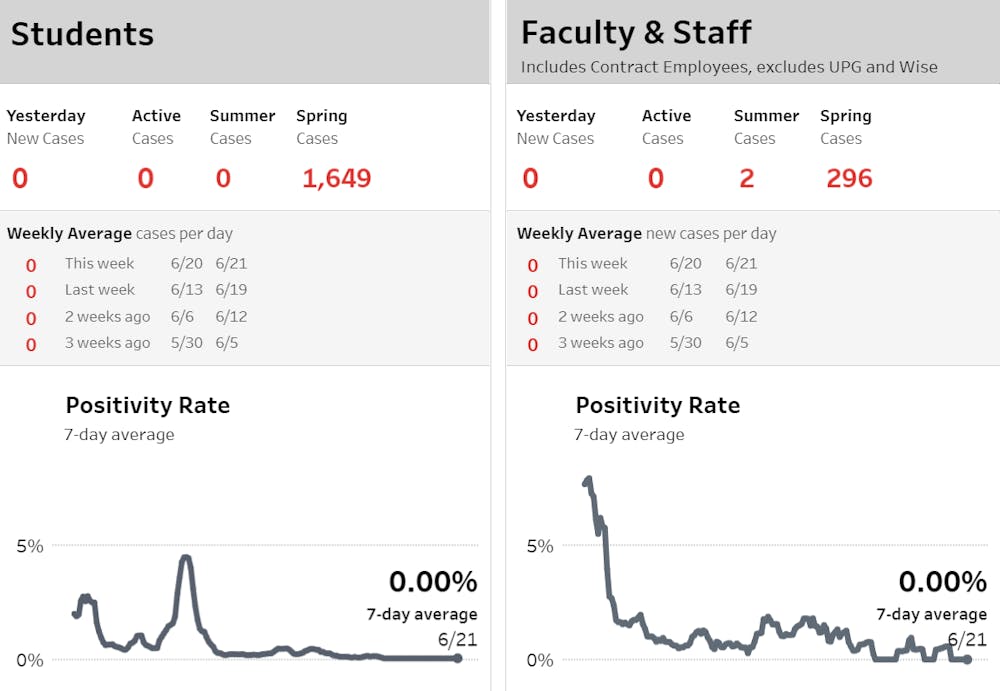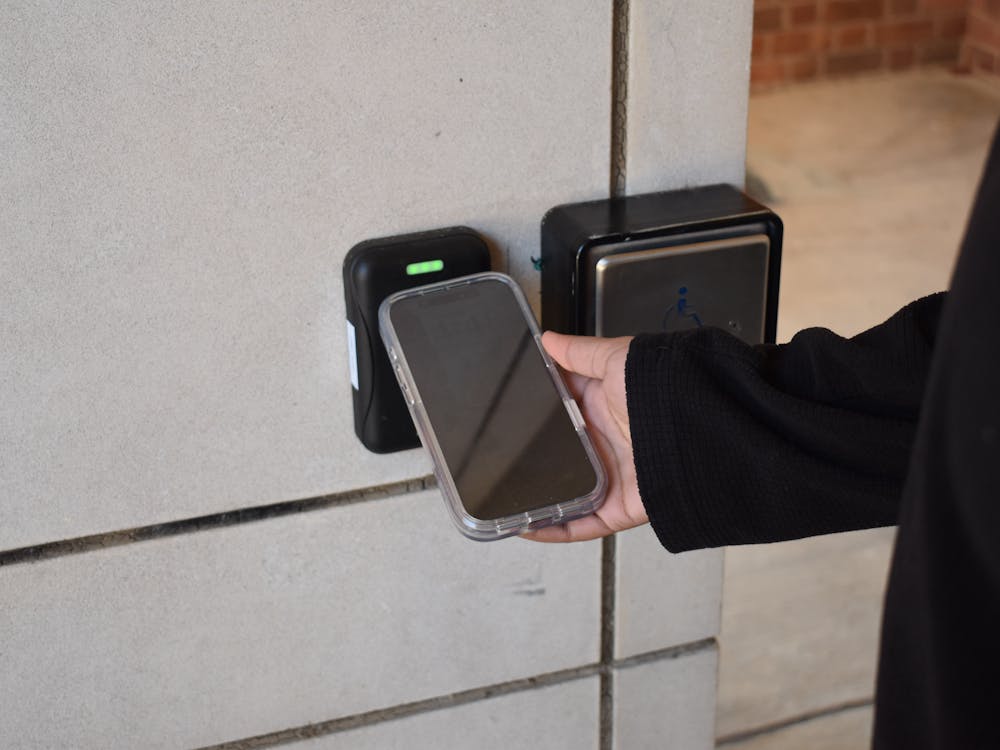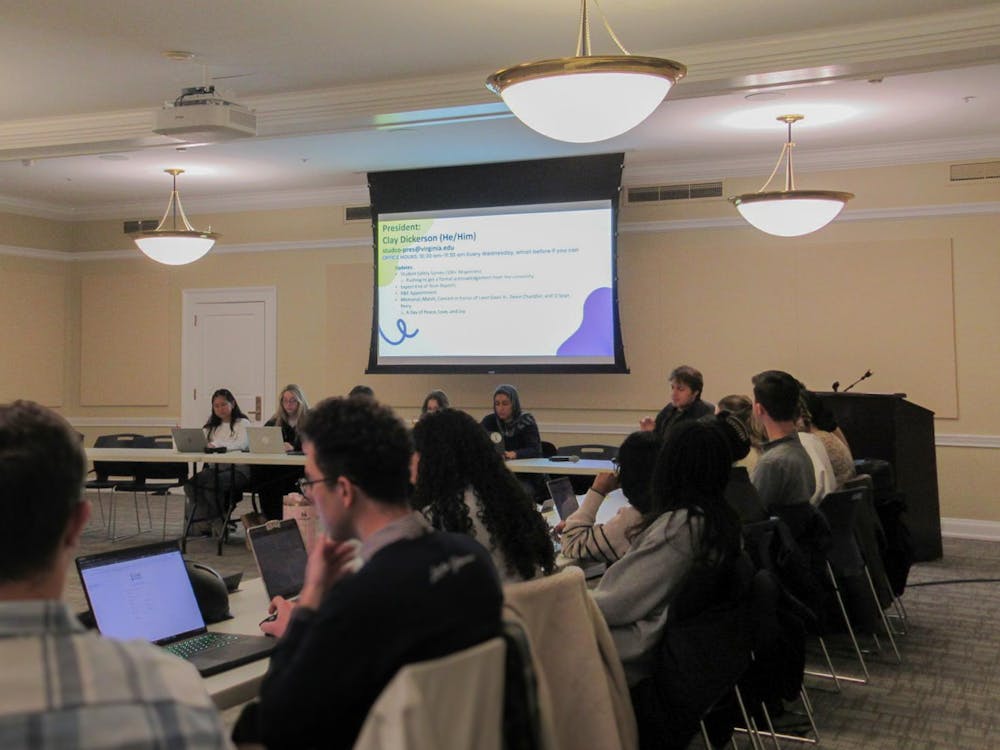Lea en español
As students and alumni departed Charlottesville following the end of final exams and Final Exercises for the Class of 2021 and the Class of 2020, for many, the challenges faced throughout the course of the spring semester have become a distant memory. Today, most students have had the opportunity to receive their first and second doses of the vaccine through U.Va. Health or their local health districts and cases within the community are at an all-time low — still, reaching this point required navigating a series of record-breaking caseloads, including a high of 229 cases on Feb. 16, fluctuating gathering limits and ever-changing public health guidelines.
A total of 1,945 cases were reported this spring in comparison to 1,548 in the fall. Of those cases, 1,649 were students while 296 were faculty or staff. Since May 23, just two positive cases were reported in the University community among faculty and staff. Neither are currently active.
Students return to Grounds for the start of the spring semester amid rising caseloads
When students first returned to Grounds for the spring semester in February, U.Va. Health was facing rising hospitalizations, increasing cases and an overworked hospital staff, with nursing staff having been required to pick up additional shifts for three weeks. Vaccine distribution had begun six weeks prior, but at that point was limited to healthcare workers, frontline essential workers and individuals over the age of 75. After warning students that the margin for error was smaller than in the fall, the University welcomed students back with a six-person gathering limit and stringent masking and social-distancing guidelines.
The University began the spring semester Feb. 1 with 127 active cases of COVID-19. During the first week of classes, that number increased to 142 as students reported for their first week of mandatory prevalence testing. Greek life recruitment also began the weekend of Feb. 5 — while the Inter-Fraternity Council permitted chapters to host in-person events throughout recruitment, the Inter-Sorority Council only allowed chapters to host in-person events on bid day, Feb. 14.
Caseloads dropped that weekend with just 95 active cases reported Feb. 8. The same day, the 213 residents of Gibbons House were placed under a 24-hour quarantine after the identification of 17 positive cases within the dormitory. This would be the first of several dorm quarantines first-year students would see this spring.
U.Va. community sees sharp uptick in cases following first two weeks of classes, Greek life recruitment
Throughout the second week of classes, however, cases began a steep climb that would initiate increasingly restrictive public health guidelines. From Feb. 9 to 11, the University community saw 145 cases reported within a 72-hour period. This brought the total number of active cases within the community to 222, 201 of which were students.
The following day, the University confirmed the presence of the B.1.1.7. U.K. variant — a more contagious strain of the virus — within the University community and extended its six-person gathering limit. 108 cases were recorded throughout the weekend, bringing the seven-day-average to 36.14 cases per day — the highest average since the tracker began Aug. 17.
Beginning a week of alarming record-setting caseloads, the University’s tracker reported 121 cases of COVID-19 on Monday, Feb. 15 — more than double the previous record of 60 cases in a single day. The following day, 230 cases were reported — 229 of which were student cases — and the University banned all in-person gatherings until further notice. Then, Feb. 17 saw 175 cases of COVID-19 — 169 of which were students — bringing the total number of active cases in the community to 779, with students making up 761 of those cases. Just three weeks into the spring semester, the total number of COVID-19 cases, 1,148, was just 400 away from surpassing the fall semester’s total of 1,548 cases.
“We have seen an additional — and unusually large — increase in positive cases, spread widely both on and off Grounds,” University leadership said in an email to students. “This spread is not directly related to variants but instead to transmission of the original strain of the virus, which can occur when individuals are not closely following health and safety protocols.”
Though both records were set in the days following bid day and the end of in-person Greek life recruitment, the University administration has maintained that in-person elements of Greek life recruitment were not solely responsible for the spread of the virus, despite speculation from students on social media and evidence of large, in-person rush events.
Throughout the weekend of Feb. 18 to 21, the University community recorded 252 cases of COVID-19. At the time, quarantine occupancy was at an all-time high of 50 percent while isolation space was 18 percent occupied. The New York Times also listed Charlottesville as a COVID-19 hotspot, meaning that it posted a large number of cases per resident and that the city was an “extremely high risk level for COVID-19 infections.”
Cases begin to decline following 10-day in-person gathering ban
Cases began to decrease the week of Feb. 25. Twenty-six cases were recorded Wednesday, Feb. 24 — compared with 175 cases a week prior — which brought the seven-day average down to 55.4 cases per day.
Following the decrease in cases, the University lifted its ban on in-person gatherings Feb. 26, returning to a gathering limit of six people. Students, however, were encouraged to stick to social bubbles, and indoor dining was still considered a high-risk activity so it was limited to groups of two.
On the same day, the IFC and ISC issued separate statements suspending in-person activities, pending reevaluation in March. After reversing its previous ban on in-person events in January after seeing widespread compliance with public health guidelines, the IFC stated that it had seen “multiple incidents of blatant noncompliance and disrespect for the less restrictive rules.”
As restrictions on in-person gatherings at the University eased, cases continued to decline, with only one new case recorded on Feb. 28. By this time, however, the University had already surpassed its fall total case count of 1,548.
Despite relaxed University restrictions, Final Exercises for the Class of 2021 were canceled as planned March 3 due to guidance from the Commonwealth of Virginia that outdoor gatherings could only have up to 25 people and indoor gatherings could only have up to 10 people.
Cases continued to see a significant decline during the week of March 4, when the seven day average positivity-rate stood at 0.60 percent compared to the peak of 4.12 percent on Feb. 20. The seven-day average number of cases was 3.4 new cases per day on March 9, the lowest since Nov. 1. On March 11, the University increased its outdoor gathering limit from six to 10, though the indoor gathering limit remained at six individuals. U.Va. Dining facilities began to operate at 30 percent capacity and students could dine indoors in groups of four, an increase from the previous limit of two.
March 11 marked the one-year anniversary of the University sending students home during spring break due to the spread of the virus. Six cases were recorded on that day, and the ISC announced March 12 that in-person activities could resume.
Zero cases were recorded on March 13 and 14 — record lows for the spring semester. After a slight increase in cases the next week, March 21 also saw zero new cases, marking two Sundays in a row without any positive cases. Following this continued decline, the University increased its outdoor gathering limit to 25 individuals March 23, once again keeping the indoor gathering limit at six.
Vaccinations began to pick up speed as eligibility expanded in other parts of the state and vaccination centers began to offer surplus vaccines. Hundreds of students drove several hours to a community vaccination center in Danville, Va. in March in order to receive surplus vaccine doses on a walk-in basis. The community vaccination center was open to everyone, whereas the Blue Ridge Health District’s vaccine distribution was still limited to everyone in phase 1a, certain essential workers in Phase 1b, seniors over 65 years old and individuals aged 16-64 with high risk medical conditions. Concerns arose over the effects of mass student travel, spreading stereotypes surrounding the Danville community and taking resources from a community with a large Black population.
While cases in the local community continued to decline, the Education Abroad Office canceled nine of 11 planned study abroad programs for summer 2021 on March 31 due to public health conditions in each host country.
The University then announced plans April 1 to resume in-person residential, educational, research experiences in fall 2021, with the assumption that vaccines would be widely available by that time. The IFC also lifted its ban on in-person gatherings and the BRHD opened vaccinations to phase 1c — composed of essential workers from 13 sectors, including staff at institutions of higher education.
Then, in a major reversal — and point of excitement for graduating students — the University announced April 2 that in-person Final Exercises would be held for the Class of 2021 due to new statewide guidance that capped outdoor ceremonies at 5,000 people or 30 percent of venue capacity and indoor ceremonies at 500 people or 30 percent of the venue capacity.
Restrictions ease steadily as vaccine eligibility expands to all students, positivity rate reaches record lows
The Blue Ridge Health District entered phase 2 of COVID-19 vaccine distribution April 12, expanding vaccine eligibility to all individuals aged 16 and older. During the week of April 12, students began receiving emails to schedule vaccination appointments through U.Va. Health.
The weekend of April 5 saw two cases reported, bringing the total number of active cases within the community to 69. Cases continued to remain in the single digits throughout the week, with just seven new cases reported over the next several days.
While U.Va. Health initially offered the one-dose Johnson & Johnson vaccine in addition to the two-dose Moderna and Pfizer vaccines, distribution of the J&J vaccine was temporarily paused on April 14 in the BRHD after six American women were found to have developed a rare blood clot disease after receiving the vaccine.The CDC lifted the pause on J&J vaccine distribution April 23, and the BRHD resumed administration of the vaccine May 1.
The University increased its gathering limits to 75 outdoors and 25 indoors April 26 following low case counts over the past several weeks. Students were still expected to practice social distancing and comply with all other University policies, including wearing masks.
As vaccine distribution continued to expand throughout the community, the University announced April 29 that fully vaccinated individuals can gather outdoors without masks, provided that they remain six feet apart from each other. The policy was in accordance with guidelines released by the Centers for Disease Control and Prevention. People are considered fully vaccinated two weeks after their final dose. Masks, however, were still required for fully vaccinated individuals in larger outdoor settings that exceeded the University’s 75-person outdoor gathering limit, including in-person Final Exercises ceremonies.
By April 30, the seven-day average positivity rate had reached 0.09 percent — an all-time low for the spring semester up until that point. On May 14, the University lifted the mask mandate for fully vaccinated members of the community, announcing that those who were fully vaccinated would not be required to wear a mask indoors or outdoors. The change was also in accordance with new CDC guidelines and applied to in-person Final Exercises ceremonies for both the class of 2020 and the class of 2021, which were scheduled to occur over the next two weeks.
At the same time that vaccinations were ramping up and restrictions were easing, the University’s COVID-19 tracker began reporting a new record low seven-day positive case average, falling to zero on May 19 — the first time this has happened since the tracker began. As of June 4, the University has not seen double-digit positive results since April 19 — when 10 cases were reported — and only one test had returned a positive result in the last 24 days of testing.
After the completion of final exams, the University announced May 20 that vaccinations would be required for all students living, learning and working on Grounds in the fall. This came after Attorney General Mark Herring found in April that Virginia colleges could require COVID-19 vaccination for in-person attendance. While faculty and staff are expected to be vaccinated, they are not required to at this time. Students may seek a religious or medical exemption but will be subject to weekly prevalence testing if the exemption is granted. According to University President Jim Ryan, over 11,000 students had received at least one dose of the vaccine as of May 6.
After more than a year of cancellations and adjustments to continuously evolving public health conditions, academic instruction is expected to return to normal in the fall — something that had previously been taken for granted but is now an experience that students can look forward to in earnest.







